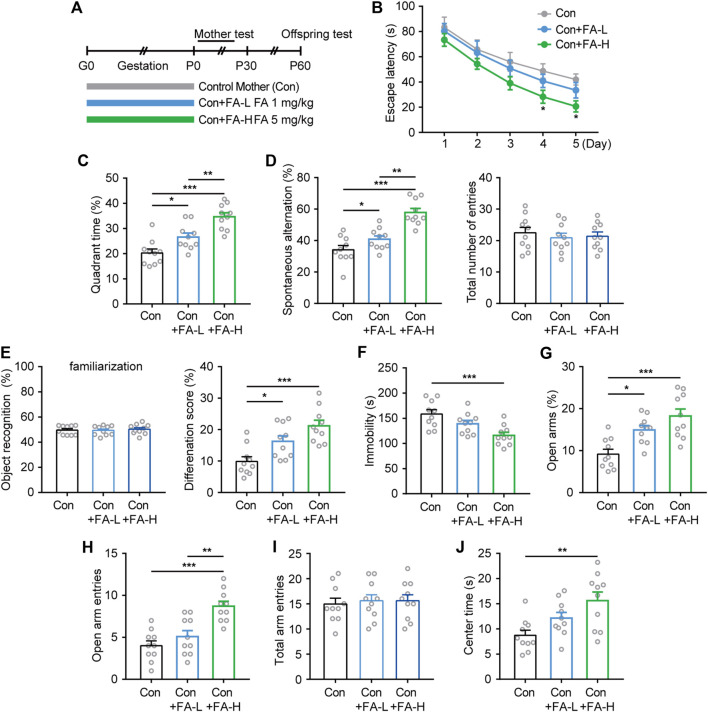FIGURE 3.
Effects of FA on cognitive- and emotional-related behaviors on postpartum female mice. (A) Schematic diagram of the experimental workflow on maternal and offspring. (B) Latency to reach the hidden platform in the training phase of the MWM. Two-way repeated measures ANOVA was used to analyze the latency during the navigation training: F (4, 36) = 31.08, p < 0.0001. *p < 0.05 Con + FA-H compared with Con. (C) FA administration increase the time spent exploring the target quadrant. One-way ANOVA: F (2, 27) = 20.45, p < 0.0001. (D) The spontaneous alteration rate and total number of entries were analyzed in the Y-maze task. One-way ANOVA: F (2, 27) = 24.46, p < 0.0001. One-way ANOVA: F (2, 27) = 0.2525, p = 0.7787. (E) Novel object discrimination were significantly improved after FA administration in postpartum female mice while had little effect on the preference for objects during familiarization. One-way ANOVA: F (2, 27) = 0.2078, p = 0.8137. One-way ANOVA: F (2, 27) = 11.84, p = 0.0002. (F) FA administration decreased the immobility time in the FST in postpartum female mice. One-way ANOVA: F (2, 27) = 8.665, p = 0.0012. The EPM results of time spent in open arms (G), the frequency of entries into open arms (H), and total arm entries (I) revealed treatment effects on anxiety. One-way ANOVA: F (2, 27) = 12.36, p = 0.0002. One-way ANOVA: F (2, 27) = 15.25, p < 0.0001. One-way ANOVA: F (2, 27) = 0.1126, p = 0.8939. (J) FA administration increased OFT center area exploring in postpartum female mice. One-way ANOVA: F (2, 27) = 6.74, p = 0.0042. Data were presented as scatter points plus mean ± SEM. n = 10 for each group. *p < 0.05; **p < 0.01; ***p < 0.001.

